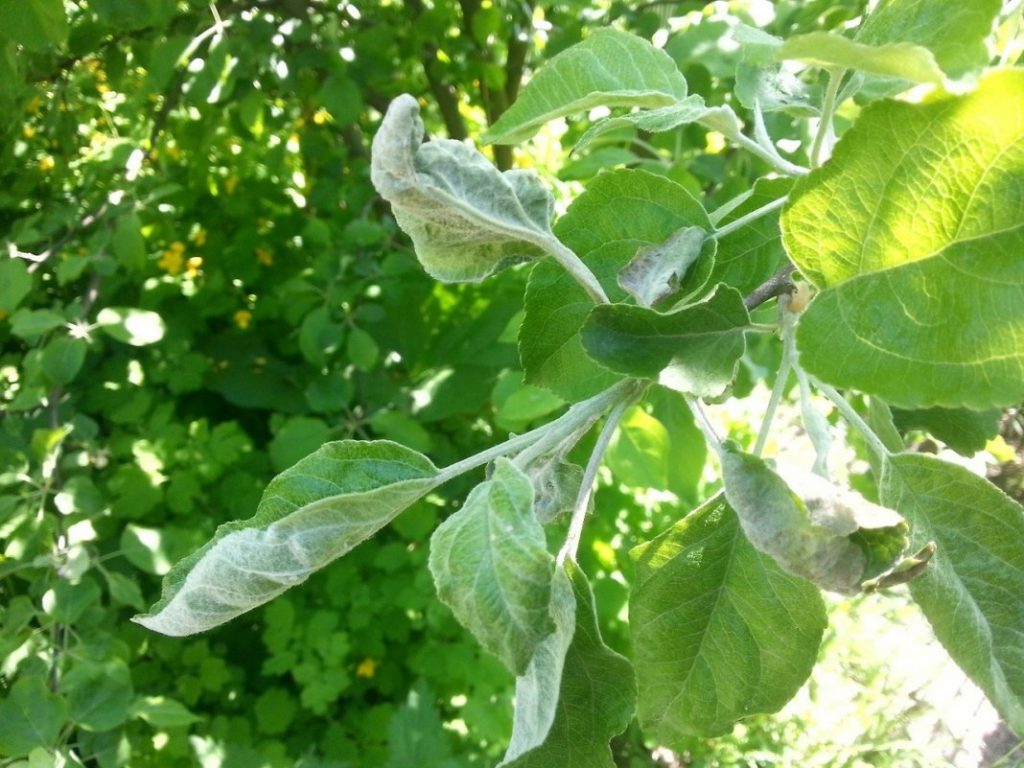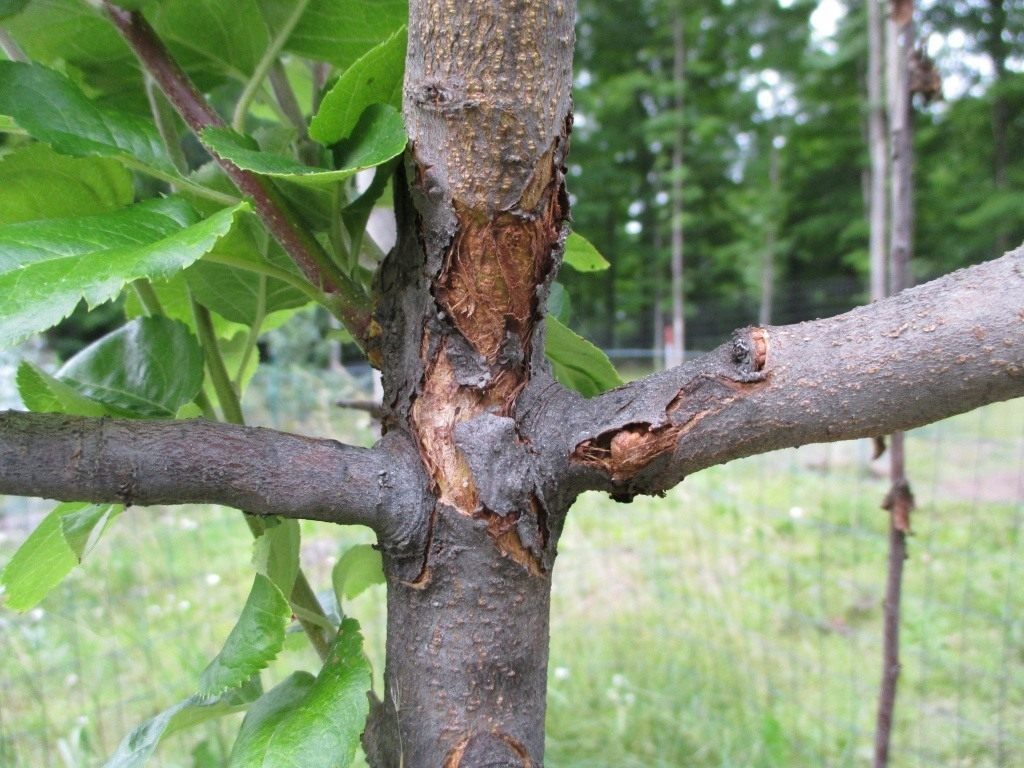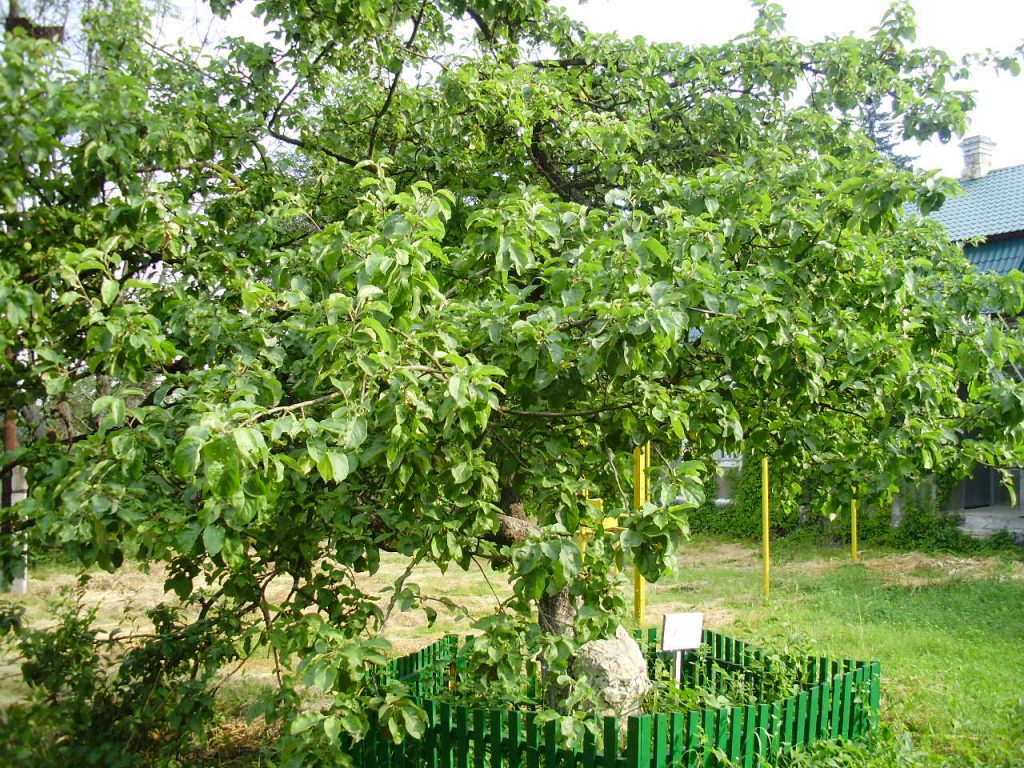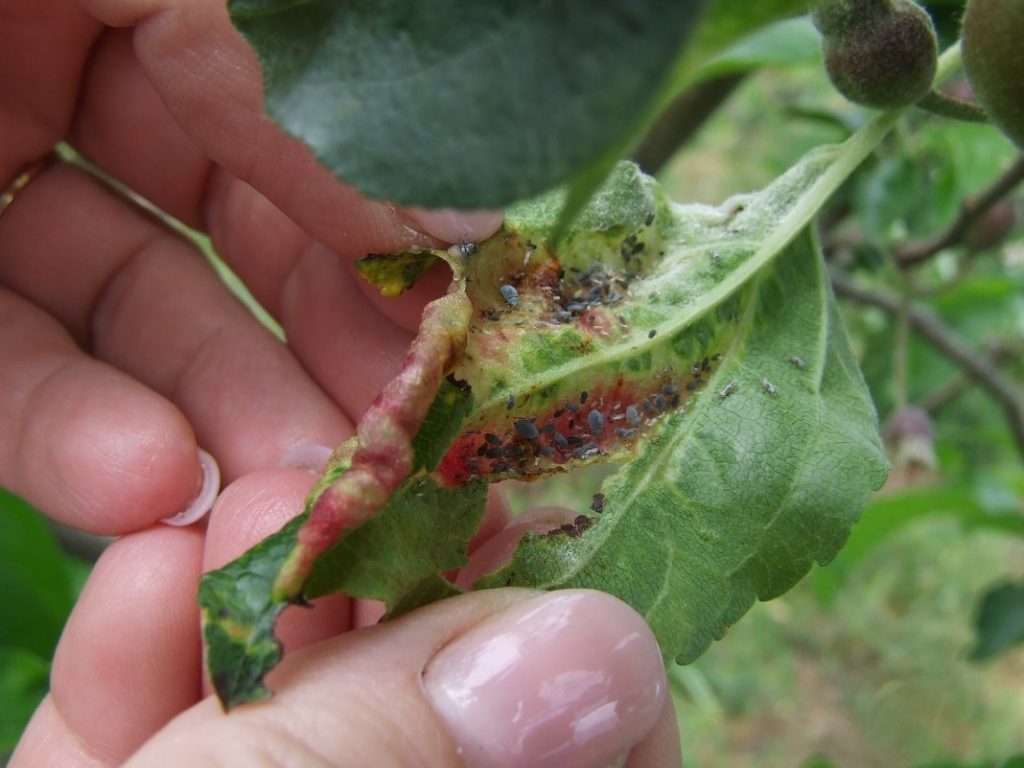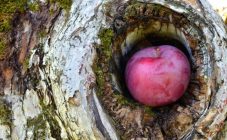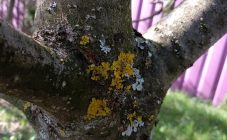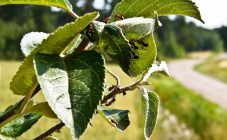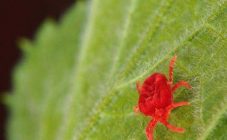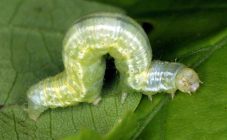Content:
The number of leaves on an apple, like on any tree, affects the course of the photosynthesis process and, as a result, the volume of the crop and the frequency of fruiting. To combat the problem, it is necessary to establish exactly why the leaves develop poorly on the apple tree or why the apple tree has pale green leaves.
Small leaves on an apple tree: cause and elimination of the problem
The development of small leaves on an apple tree or pallor can have several reasons. Among the main ones are the following:
- Lack of nutrients.
- The location of groundwater is close to the surface of the earth.
- Infection with infectious diseases.
- Freezing of the root system.
The number and size of leaves on an apple tree depends on the amount of nitrogen in the soil. With a deficiency, the leaf grows slowly and grows small. With a significant lack of this element, the leaves brighten and turn pale, and after a while they fall off.
Yellowing or underdeveloped leaves are associated with insufficient amounts of iron, magnesium or zinc. In this case, the leaves on the upper part of the crown are mainly affected. Necrosis develops on them. If you do not fight this problem, the leaves will fall off.
The reason why there are small leaves on the apple tree may also lie in the close occurrence of groundwater. This situation provokes the soaking of the roots, the development of putrefactive processes on them, and after a while the death of the apple orchard.
The size of leaf blades and apples is also affected by infection of the tree with infectious diseases:
- powdery mildew;
- black cancer;
- milky shine;
- scab.
The apple tree has pale leaves, what should I do? It is necessary to carry out activities aimed at treating the tree from the disease. Among the most common manipulations are the following:
- Timely remove fallen leaves from under the tree.
- When pruning the crown, be sure to remove dry and diseased branches.
- After harvesting, spray the trees with a 5% urea solution.
- Treat crowns with 1% Bordeaux mixture solution or 0.3% copper oxychloride suspension. The first time the tree is processed before the buds swell in the spring, the second - after the end of the flowering period, and the third - after the leaves fall.
- Use Hom to spray the apple tree, which must be diluted in cold water at a concentration according to the instructions. The tree is treated with this preparation twice: after the young foliage has blossomed, after the end of flowering.
If the leaves turn white on the apple tree, it is possible that the root system froze during severe winter frosts. This situation can occur if there is little snow during the winter. It is also possible that the roots of the apple tree freeze if the variety has a low level of winter hardiness, and the tree is not thoroughly prepared for winter. Freezing of the root system will lead to the fact that there will be little nutrition and the leaves will not be able to develop to their normal size.
Rosette and small-leaved apple trees, treatment and causes of the disease
The disease can appear not only on fruit trees, but also on ornamental shrubs. At the same time, small leaves are formed on the tree. In addition, they are pale in color. The leaf blades are full of holes. Their internodes are short and have a deformed apex. Fruits of small size and in small quantities are formed on the tree.
How to treat the small-leaved apple tree? The answer to this question will help keep your apple orchard healthy. An insufficient amount of zinc, phosphorus and copper in the soil, which act as catalysts for biological and chemical reactions, can provoke the formation of small leaves on the tree. The amount of zinc is especially important in the case of the process of liming the soil, as well as when applying a large amount of phosphorus fertilizers to the soil.
Often, the following factors become the cause of small apple leaves:
- too dry summer;
- functional disorders of the root system;
- tree infection with viral diseases;
- damage of a thermal or mechanical type.
All of the above factors lead to a weakening of the apple tree's immune system. After that, the tree may get sick.
Prevention measures
As you know, prevention is much easier to deal with than treatment. In this case, the axiom works 100%.
Therefore, the owner of an apple orchard needs:
- To carry out timely prevention of damage to apple trees by harmful insects, as well as viral and infectious diseases.
- When digging up the periosteal circle, you should be especially careful so as not to damage the root. Often, it is damage to the root system that causes the crown to suffer.
- Spray the tree with 0.5% zinc sulfate. Processing should be carried out twice: before the beginning of the flowering period and after its completion.
- Since experts are sure that small leaves are most often an infectious disease, cuttings for propagation should be taken only from completely healthy trees.
- In the spring, whitewash the stem and the upper part of the branches with a solution of lime or copper sulfate.
Often the problem is caused by fruit trees densely located to each other. This situation prevents normal ventilation of the crown of each tree, as well as insufficient supply of sunlight to the tree branches. In order to avoid such a situation, experienced gardeners recommend planting seedlings at a distance of 4 m from each other.
What to do if the apple tree has small and light green leaves
If the disease still affects part of the orchard, or there are any suspicions about diseases and pests, action should be taken immediately.
- If symptoms of ailment are found, it is recommended to treat the soil under the tree with a solution of sulfur zinc. In order to make it, it is necessary to dissolve 150 - 250 g of the drug in 1 liter of water.
- Order a soil analysis in the laboratory, which will show the exact amount of trace elements that are in it. This will make it possible to determine which fertilizers should be applied and which should be discontinued.
- The branches affected by the disease must be cut off and burned immediately.
- Before the buds of the tree bloom, the tree is treated with a 3% sulfuric acid solution of zinc. If the degree of development of the disease is strong, the tree can be treated with the same solution, but at a higher concentration (5 or 12%). If after the first treatment the symptoms of the disease do not disappear, it is necessary to re-spray.
- If the cause of the development of a small leaf blade is a flower beetle pest, it completely destroys all flower buds. It is necessary to carry out activities aimed at the destruction of the pest.To do this, the insects are manually shaken off the tree or I process the crown of the tree with an infusion prepared from pharmaceutical chamomile.
- In the event that the cause of the development of the disease is the defeat of the tree by a cancer disease, all affected leaves and parts of the bark of the trunk and branches must be removed immediately. To do this, you can use a special antiseptic solution prepared from copper sulfate. Then these places are treated with garden varnish or paint prepared on the basis of drying oil. Such plants are extremely difficult to save. If the implementation of all the activities did not lead to a positive result, the tree will have to be cut down and burned. This will help avoid contamination of other garden plants with the disease.
- The development of the disease, the milky sheen affects the leaves of the tree, which become small and change their color to pale green. Basidial fungus provokes the disease. If medical therapy is not carried out in a timely manner, the tree dies. The initial stage of the disease is manifested by a decrease in the level of yield. It should also be noted that the disease leads to a decrease in the size of the fruit, as well as a radical change in their taste.
By engaging in competent prevention and performing therapeutic measures, you can guarantee the full and healthy development of trees. With proper care, every apple tree is bound to produce a generous harvest of apples. Of course, every gardener periodically faces some kind of problems, but small leaves on an apple tree are not fatal and are most often treatable.
